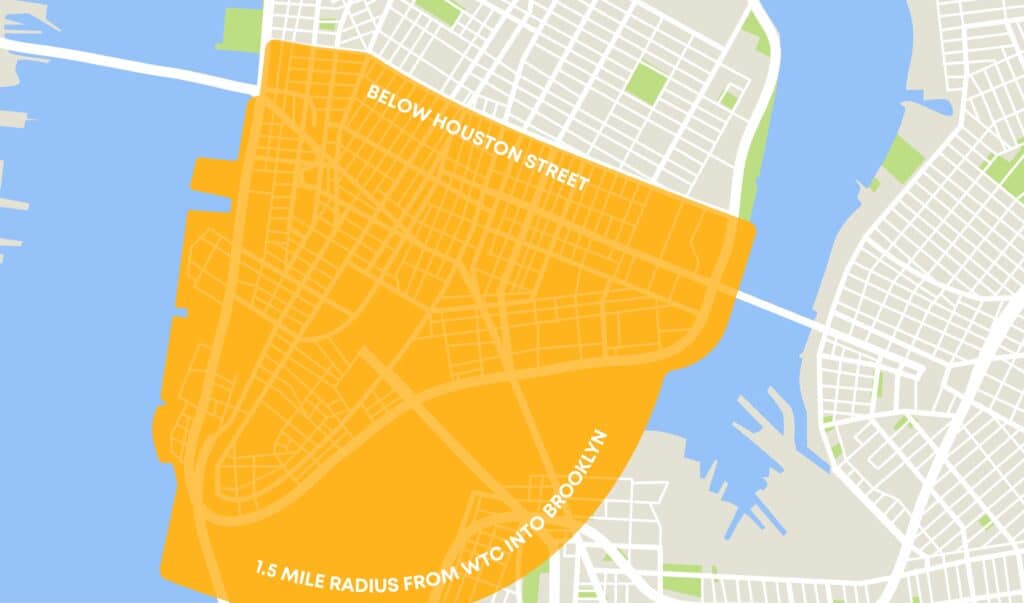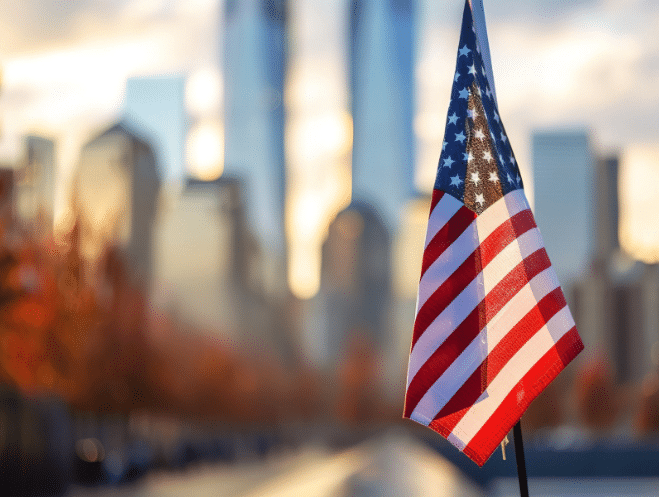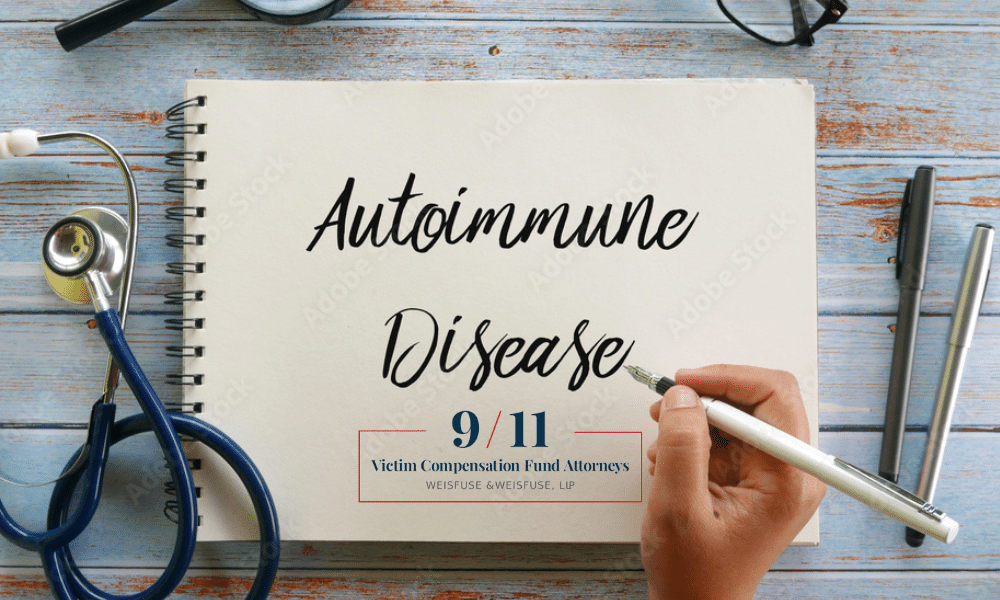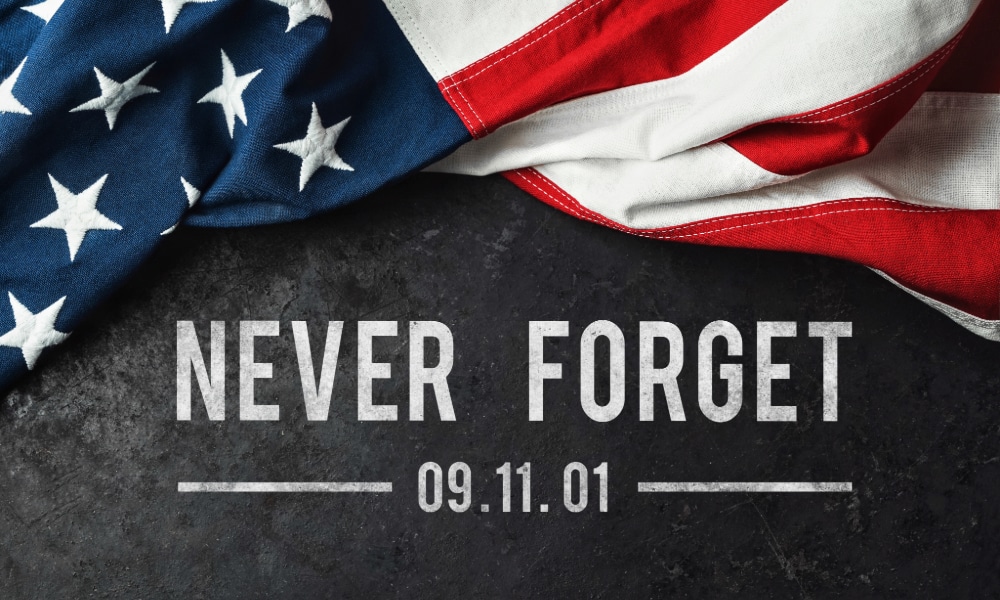Even more than two decades after the horrific 9/11 terrorist attacks on the World Trade Center, recovery workers continue to suffer from cancers caused by exposure to the toxic dust caused by the collapse of the WTC (World Trade Center). In addition to first responders from the New York City Fire Department (FDNY) and the New York City Police Department (NYPD), the New York Health Department notes that “paramedics, operating engineers, laborers, ironworkers, telecommunications workers, National Guardsmen and New York State employees spent days to months working in contaminated environments.” It is estimated that more than 90,000 people were involved in recovery efforts at the WTC in the days, weeks, and months following the 9/11 attacks.
Updated study review indicates full health effects of exposure to carcinogens among recovery workers
The aim of this 9/11 recovery workers cancer study, with research supported by the National Institute of Safety and Health (NIOSH) and similar prominent institutions, was to conduct an updated review of data previously collected and recorded by the Centers for Disease Control and Prevention (CDC) and NIOSH, the World Trade Center Health Program (WTCHP) General Responder Cohort (GRC), the FDNY, and the WTC Health Registry.
The recovery workers and first responders in the study had been exposed to a number of known carcinogens in the contaminated dust that “remained in the air for days, until rain in the early morning of September 14, 2001, helped suppress the dust.” Even after the rain and continued spraying of the debris with water, dust continued to be resuspended. This toxic stew also included harmful smoke and gases and contained known or suspected carcinogens including:
- Asbestos: Leading cause of mesothelioma, and linked to cancers of the lung, larynx, and ovary
- Arsenic: Especially toxic in its inorganic form, is associated with increased risk of bladder and skin cancer, and may cause cancer of the lung, digestive tract, liver and kidney.
- Polycyclic Aromatic Hydrocarbons (PAHs): May be associated with increased risk of cancers including skin, lung, bladder, and gastrointestinal.
- Polychlorinated Biphenyls and Polychlorinated Furans: Associated with non-Hodgkin lymphoma, a cancer that starts in the white blood cells and can adversely affect the immune system.
- Dioxins: In addition to being carcinogenic, dioxin exposure is linked to a greater risk of cardiovascular disease.
This is just a partial list of the types of toxins to which workers were exposed and the types of cancers and diseases most associated with each of these contaminants. The World Trade Center Health Program recognizes 15 types of 9/11-related cancers. This now includes rare cancers (those with an incidence of fewer than “15 cases per 100,000 persons per year based on age-adjusted 2005-2009 average annual data”) such as pancreatic, vaginal, adrenal gland, and testicular cancer, among others). Studies such as this one helps the Program understand evolving needs so they can add cancers and other illnesses to the list of certified conditions.
9/11 World Trade Center workers are more likely to have an increased risk for these types of cancers
It is apparent that a number of 9/11 medical conditions are linked to the terrorist attack on the World Trade Center—from acute injuries to aerodigestive disorders (such as chronic cough syndrome, GERD, and COPD)—but few may be more frightening than cancer. While the review shows that some cancers are not more prevalent among September 11 workers when compared to the New York State population overall, WTC rescue and recovery workers have an increased risk of several specific cancers, including:
- Prostate cancer: The prostate is part of the male reproductive system. Cancer of the prostate is slow-growing and can be treated if caught in the earlier stages. However, if it spreads outside of the prostate gland, it may become significantly more dangerous. Researchers have concluded that exposure to the toxic dust caused an inflammatory response in the prostate, leading to prostate cancer.
- Cutaneous melanoma: A malignant tumor of the skin that is formed in the pigment-producing melanocyte cells, cutaneous melanoma is “one of the most aggressive and fatal forms of skin malignancies.” Rescue and recovery workers face an increased risk caused by exposure to high concentrations of polycyclic aromatic hydrocarbons (PAHs), arsenic, and polychlorinated biphenyls found in the WTC dust.
- Thyroid cancer: The thyroid is an endocrine gland that produces the hormones that regulate body temperature, heart rate, and metabolism. The Mt. Sinai World Trade Center Health Program observed a rate of thyroid cancer among WTC first responders and recovery workers to be two to three times that of populations in New York City and New York State overall. While curable, victims of thyroid cancer will require hormone replacement medication if the thyroid is removed.
- Tonsil cancer: Tonsil cancer is the most common form of oropharyngeal (the area at the back of the mouth behind the oral cavity) cancer. Often linked to human papilloma virus (HPV) and lifestyle behaviors such as heavy smoking, it is among the 911 recovery workers cancers that shows an increased risk due to exposure to the toxins in the WTC dust.
What went into finding out more about 9/11 rescue and recovery workers’ cancer risks.
This review was a summary of the “epidemiologic studies that have been conducted among WTC-RRWs and provides evidence of an increased incidence of specific types of cancers” among WTC 9/11 recovery workers and 9/11 first responders. It covered information obtained through published reports from three main cohorts (studies of specific groups of people over a period of time), including site-specific and occupational-specific (such as that from the FDNY) studies, and a general responder cohort. Each of these previous studies contained overlap and inconsistencies, which “prompted the study investigators to combine their data with consistent case definitions and ascertainment, harmonized exposure definitions, and additional follow-up.”
The study supports continued monitoring of WTC (World Trade Center) first responder and recovery workers with 9/11 cancer
As the review states: “It is plausible that we are just starting to see the full effect of WTC exposure on cancer risk: for this reason, surveillance of these cohorts should be continued, in our opinion, and in-depth analyses of epidemiologic, molecular, and clinical aspects of specific cancers in these workers should be conducted.”
Many cancers take years to become evident. Whether one of the cancers specified in this review or any cancer that is recognized as a 9/11-related illness, all WTC rescue and recovery workers are urged to apply to the World Trade Center Health Program. Those who have a certified 9/11 condition are eligible for monitoring and medically necessary treatment with no out-of-pocket costs.
Learn more about how a New York 9/11 benefits attorney can help
If you have been denied benefits through the WTC Health Program or the Victim Compensation Fund (VCF), please contact Weisfuse & Weisfuse LLP. We have experience in assisting those who answered the call get the benefits they deserve. To discuss your needs, please contact us online or call our office at 332-239-1880 to schedule a free consultation.

About Jason Weisfuse –
9/11 Victim Compensation Fund Attorney
About Jason Weisfuse –
9/11 Victim Compensation Fund Attorney
Jason E. Weisfuse is a seasoned 9/11 cancer attorney and managing partner at Weisfuse & Weisfuse, LLP, a New York City-based law firm dedicated to representing individuals affected by the September 11th attacks. Since the establishment of the September 11th Victim Compensation Fund (VCF), Jason has been instrumental in assisting first responders, survivors, and families in securing the compensation and medical benefits they deserve.
With a Juris Doctor from New York Law School (2009), Jason brings extensive experience regarding the 9/11 Victim Compensation Fund to his practice. His deep understanding of the VCF and the World Trade Center Health Program (WTCHP) has enabled him to navigate complex claims processes effectively, resulting in substantial awards for his clients.
Jason’s commitment to the victims in the 9/11 community is evident through his active involvement in professional organizations such as the New York State Trial Lawyers Association and the American Association for Justice. He has also contributed to legal discourse with publications in the New York Law Journal, reflecting his dedication to legal excellence and advocacy.
At Weisfuse & Weisfuse, LLP, Jason continues to provide compassionate and knowledgeable representation, ensuring that those affected by 9/11 receive the support and compensation they are entitled to.







